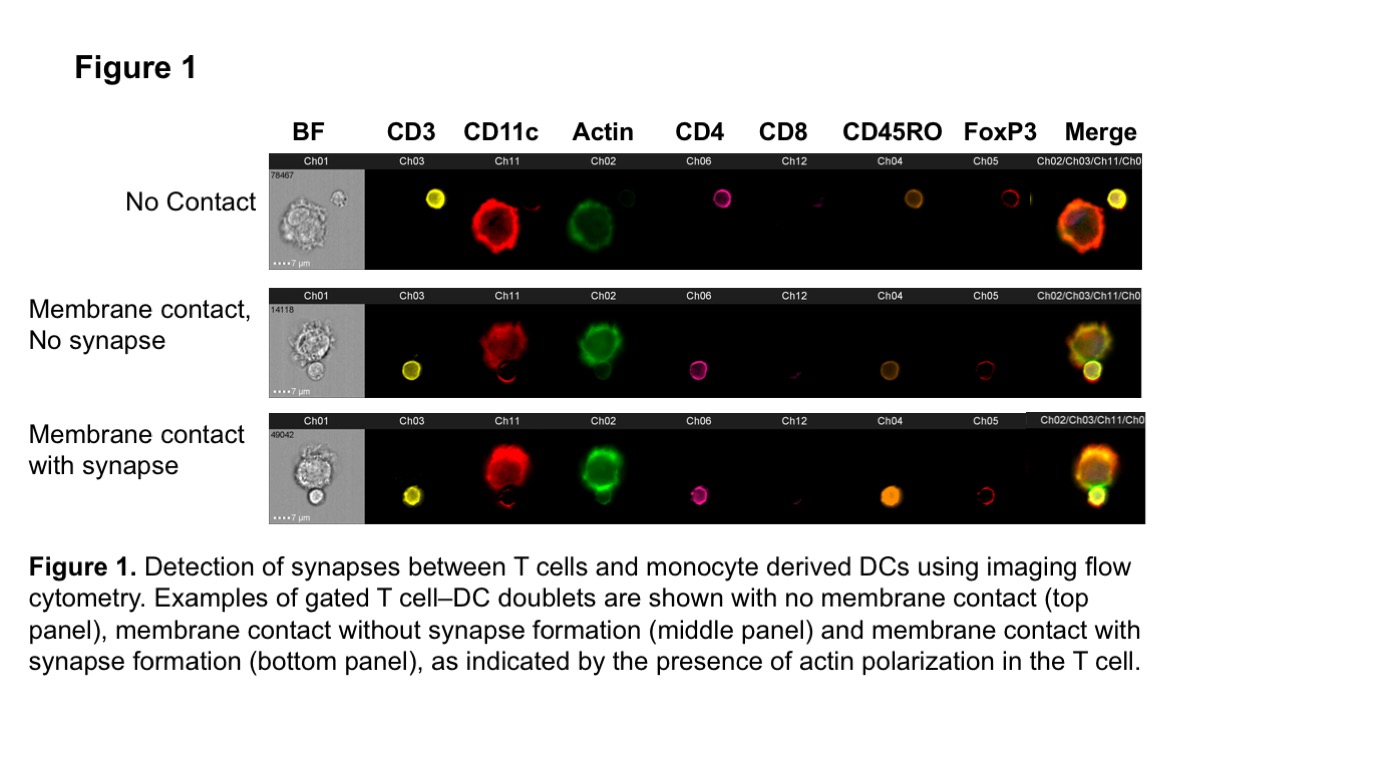High-Throughput Immune Synapse Detection as a Tool for the Measurement of T Cell Alloreactivity
UHN, Toronto, ON, Canada
Meeting: 2019 American Transplant Congress
Abstract number: D155
Keywords: Allorecognition, T cell reactivity, Tolerance
Session Information
Session Name: Poster Session D: Lymphocyte Biology: Signaling, Co-Stimulation, Regulation
Session Type: Poster Session
Date: Tuesday, June 4, 2019
Session Time: 6:00pm-7:00pm
 Presentation Time: 6:00pm-7:00pm
Presentation Time: 6:00pm-7:00pm
Location: Hall C & D
*Purpose: Measurement of T cell alloreactivity may facilitate a more accurate prediction of graft outcome and the selection of patients for immunosuppression optimization. However, current technologies cannot reliably determine the frequency or phenotype of alloreactive T lymphocytes in transplant recipients. The mixed lymphocyte reaction (MLR) may be informative pre-transplant, but its reliability is poor post-transplant. In contrast, we have shown that high-throughput immune synapse detection (ISD) using imaging flow cytometry can be used to predict graft outcome in mice. Here, we present our results validating this approach in human subjects.
*Methods: Donor monocyte-derived dendritic cells from five healthy donors were used as APCs in 4 hour co-cultures with purified allogeneic or autologous T cells prior to fixation and staining. Immune synapses, reflected by the formation of an actin-rich ridge at the T-APC contact region, were distinguished from non-immunogenic contacts by imaging flow cytometry on an ImageStream Mark X instrument. This technique combines the high-throughput quantitative power of flow cytometry with the imaging capabilities of confocal microscopy (Fig 1).
*Results: Normal 0 false false false EN-US X-NONE AR-SA /* Style Definitions */ table.MsoNormalTable {mso-style-name:”Table Normal”; mso-tstyle-rowband-size:0; mso-tstyle-colband-size:0; mso-style-noshow:yes; mso-style-priority:99; mso-style-parent:”; mso-padding-alt:0cm 5.4pt 0cm 5.4pt; mso-para-margin:0cm; mso-para-margin-bottom:.0001pt; mso-pagination:widow-orphan; font-size:12.0pt; font-family:Calibri; mso-ascii-font-family:Calibri; mso-ascii-theme-font:minor-latin; mso-hansi-font-family:Calibri; mso-hansi-theme-font:minor-latin;} ISD – wherein actin polarization reveals T cell priming – among all doublets in which APCs and T cells were in contact (Figure 1) revealed a higher frequency of allogeneic (mean= 10.2%) compared with autologous (mean= 4.8%) synapses. Blocking TCR-MHC interaction confirmed specificity of the detection method. MLRs performed with the same allogeneic pairs revealed a similar alloreactive precursor frequency (mean= 10.8%). In addition, ISD permitted quantification of naïve, memory, helper, cytotoxic and regulatory T cell alloreactivity. Furthermore, despite the inherent subjectivity of image-based analyses, we found a very high interobserver agreement in the analysis of ISD data (coefficient of concordance = 0.996), suggesting the viability of this method for further development.
*Conclusions: ISD identifies and phenotypes alloreactive T cells in the peripheral blood of healthy controls. A prospective study of this method in lung transplant recipients is currently underway.
To cite this abstract in AMA style:
Moshkelgosha S, Juvet SC. High-Throughput Immune Synapse Detection as a Tool for the Measurement of T Cell Alloreactivity [abstract]. Am J Transplant. 2019; 19 (suppl 3). https://atcmeetingabstracts.com/abstract/high-throughput-immune-synapse-detection-as-a-tool-for-the-measurement-of-t-cell-alloreactivity/. Accessed December 12, 2025.« Back to 2019 American Transplant Congress

